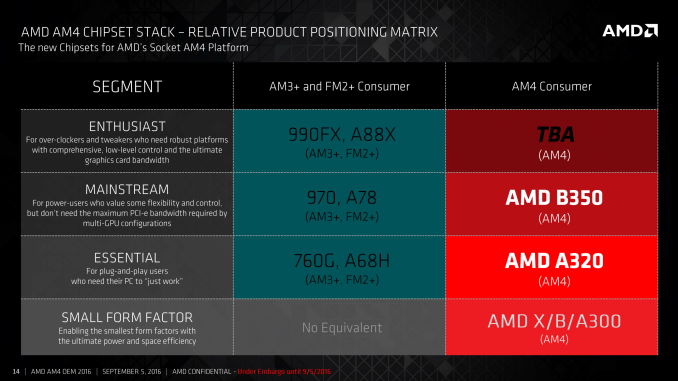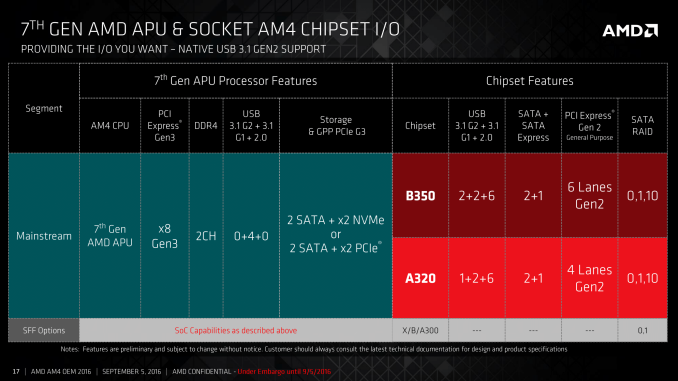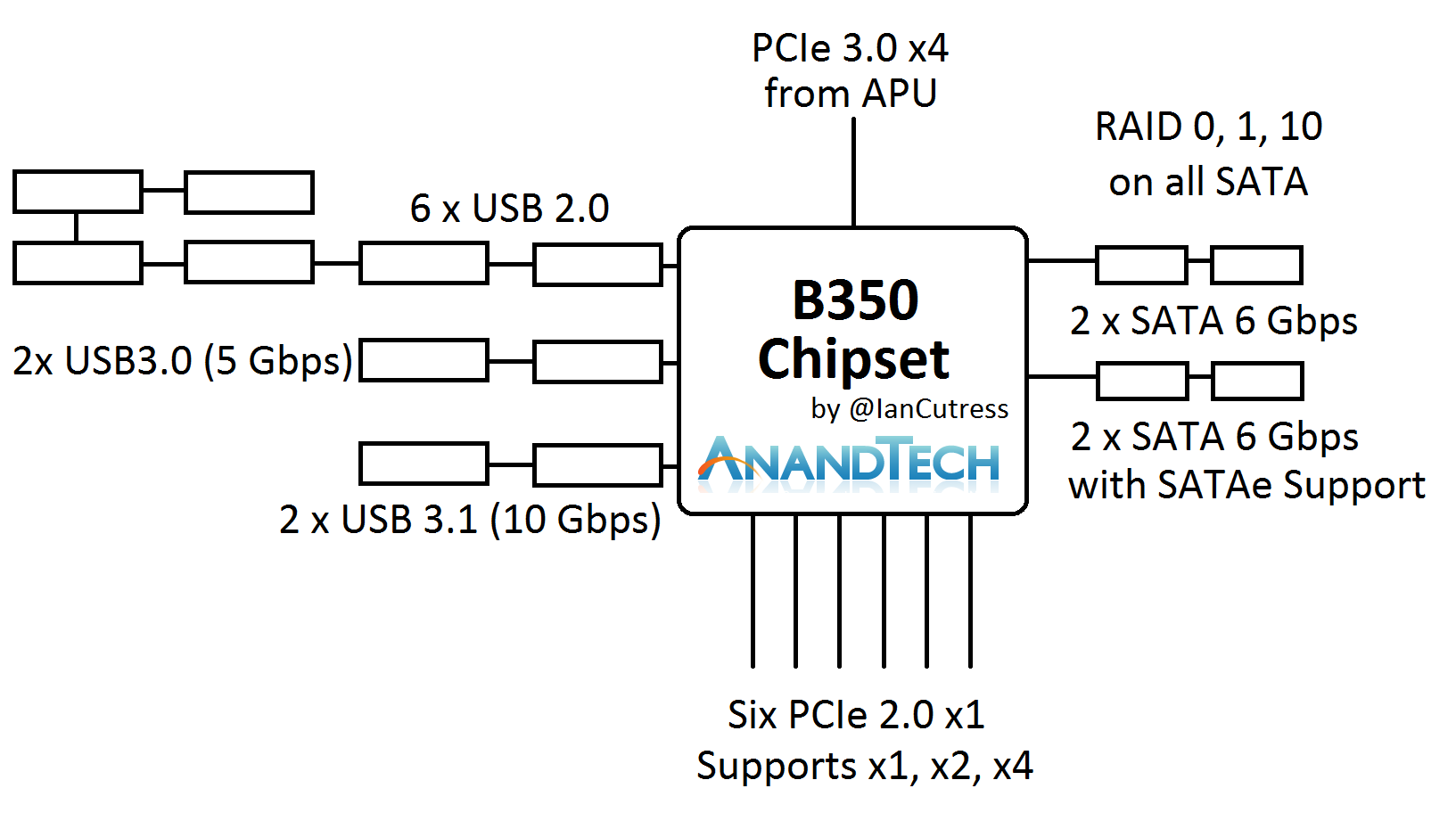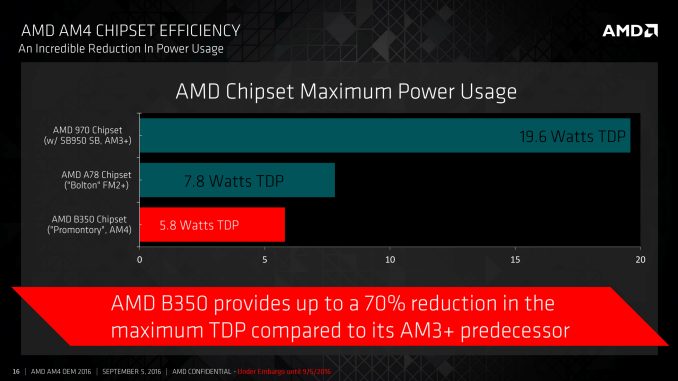AMD 7th Gen Bristol Ridge and AM4 Analysis: Up to A12-9800, B350/A320 Chipset, OEMs first, PIBs Later
by Ian Cutress on September 23, 2016 9:00 AM ESTThe Two Main Chipsets: B350 and A320
Despite all the crazy potential that might come from playing with PCIe, if a user wants more than a couple of SATA ports or x1 slots, the chipset is there to provide. For the Bristol Ridge OEM launch, there are two main chipsets with a further three aimed more at embedded platforms. We’ll focus more on the first two.
It’s worth noting that AMD has specifically listed that the B350 chipset is not the premium chipset for AM4. We know that Zen will be a part of the AM4 socket and ecosystem, and it would seem that there is at least one specific chipset for the high-end desktop market set to come later. Feel free to speculate.
The B350 and A320 chipsets are mostly identical, using the PCIe 3.0 x4 from the CPU and offering a variety of SATA, USB and PCIe 2.0 connectivity. The PCIe 2.0 lanes, six on the B350 chipset and four on the A320 chipset, support x1, x2 and x4 modes for an array of different controllers. Perhaps the interesting thing here is the support of USB 3.1 at 10 Gbps, which is provided as native support from the chipset.
The main provider of USB 3.1 controllers in the market currently, ASMedia, has been floated around as a partner with AMD in designing these chipsets. We asked AMD if ASMedia was involved, and to what extent, in the development or IP of the hardware. We were told that while the IP is with AMD, ASMedia were bought on as a partner in some fashion (most likely as a design firm or a consultant) to help produce the hardware. We were informed that the chipsets are manufactured at TSMC using a 55nm process, which is a much cheaper process than 28nm or 16nm.
An additional aside, the chipset USB 3.1 ports do not support reversible Type-C natively. We have been informed that a re-driver chip is required to support the revisable connectivity, which is a minor additional IC required by the OEMs.
Aside from the native USB 3.1 output, AMD’s chipset offerings are far behind Intel’s current implementation, affording up to 20 PCIe 3.0 lanes from their chipset despite the same uplink equivalent. This is partly because Intel’s chipset has steadily grown and looks more like a PCIe switch itself. AMD is claiming that the external B350 chipset, compared to the older AM3 platforms, comes down from 19.6W TDP to 5.8W TDP.















122 Comments
View All Comments